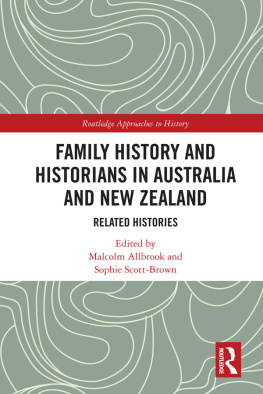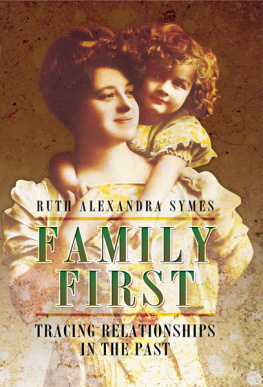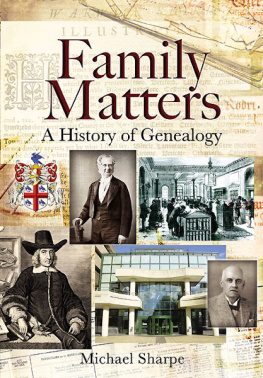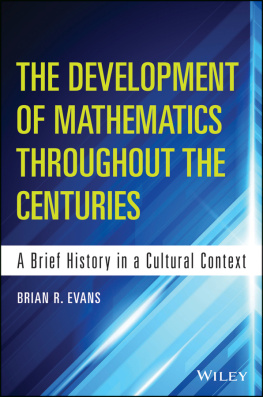Family Law in the Twentieth Century:
A History
Stephen Cretney
- Great Clarendon Street, Oxford ox2 6DP
- Oxford University Press is a department of the University of Oxford.
- It furthers the Universitys objective of excellence in research, scholarship,
- and education by publishing worldwide in
- Auckland Cape Town Dar es Salaam Hong Kong Karachi
- Kuala Lumpur Madrid Melbourne Mexico City Nairobi
- New Delhi Shanghai Taipei Toronto
- With offices in
- Argentina Austria Brazil Chile Czech Republic France Greece
- Guatemala Hungary Italy Japan South Korea Poland Portugal
- Singapore Switzerland Thailand Turkey Ukraine Vietnam
- Published in the United States
- by Oxford University Press Inc., New York
- The moral rights of the author have been asserted
- Crown copyright material is reproduced under Class Licence
- Number C01P0000148 with the permission of the Controller of
- HMSO and the Queens Printer for Scotland
- Database right Oxford University Press (maker)
- First published 2003
- Published in paperback 2005
- All rights reserved. No part of this publication may be reproduced,
- stored in a retrieval system, or transmitted, in any form or by any means,
- without the prior permission in writing of Oxford University Press,
- or as expressly permitted by law, or under terms agreed with the appropriate
- reprographics rights organization. Enquiries concerning reproduction
- outside the scope of the above should be sent to the Rights Department,
- Oxford University Press, at the address above
- You must not circulate this book in any other binding or cover
- and you must impose this same condition on any acquirer
- British Library Cataloguing in Publication Data
- Library of Congress Cataloging in Publication Data
- ISBN 0-19-826899-8 (Hbk.)
- ISBN 0-19-928091-6 (Pbk.)
- Typeset by Hope Services (Abingdon) Ltd.
- Printed in Great Britain
- on acid-free paper by
- Biddies Ltd., Kings Lynn
(p.v) Dedication
This book is dedicated to the memory of my father
Fred Cretney
Born: Barnsley, Yorkshire, 30 January 1902
Employed, for more than 50 years in the City of Manchester,
from 1915 to 1968
Died: Sherborne, Dorset, 16 February 1980
Contents
(p.vi) Prefatory Note to the Paperback Edition
This is essentially a reprint of the hardback edition published in 2003: no significant revision or up-dating has been undertaken, but the opportunity has been taken to correct some errors in the text. I am particularly grateful to Mr James Buckley, Professor Sir Guenter Treitel, and Professor Nigel Lowe for help in this respect.
Stephen Cretney
25 August 2004
(p.vii) Preface
There are many possible ways of approaching the history of the law and the family. This book is a study of the development of legal doctrine as embodied in English statute and case law and of the processes which led to change in the law in the twentieth century. It is not a study of the social and economic forces which govern the distribution of power in society and ultimately influence attitudes towards legislation and legal practice, nor is it a study of the impact which the law has on individual behaviour.
I believe that studies of the process of law reform can be revealing; and the reader will find many examplesthe enactment of the Matrimonial Homes Act 1967 and its subsequent history may be onein which what are sometimes dismissed as technical details influence the development of law and policy. Those who work away from the public gaze (notably officials in the government departments concerned and, perhaps most of all, the parliamentary counsel) have a greater influence in this respect than is often realised. Again, the fact that legislation in a democracy is almost always to a greater or lesser extent the outcome of a compromise between different interests is frequently not appreciated, whilst the tactics of those who wish to promote or resist change often influence developments (sometimes in an unforeseen way). The long history of the attempt to reform the divorce law in the period between the two World Wars and from 1945 to the enactment of the Divorce Reform Act in 1969 is an obvious example; but the struggle to provide some legal redress for the disinherited is less well known. A study of these processes may also throw some light on the development of what have come to be regarded as fundamental characteristics of English family law, notably the commitment (puzzling to some lawyers within the United Kingdom as well as to those elsewhere in the European Union) to allowing a wide judicial discretion to determine the arrangements to be made following marital breakdown.
I have made use not only of published sources but also of unpublished official papers and other archival sources. This is not a work of empirical research, but I have drawn heavily on studies of the working of the legal system, notably those conducted or inspired by the late Lord McGregor of Durris. It would be difficult to exaggerate his contribution to bringing about a change of attitude to the way in which the community regards the family justice system. I have also drawn on the valuable empirical studies made at a somewhat later period by my former colleagues at Bristol University, Professors Gwynn Davis and Mervyn Murch.
The book focusses on the twentieth century; but goes further back in time when necessary for an understanding of legal developments in the century. It is not a textbook on family law as it is today, and for that reason developments in the last 15 or 20 years of the century are dealt with comparatively briefly. (p.viii) I intend the book to reflect the importance which issues seemed to have for contemporaries rather than the importance they have for observers at the end of the twentieth century; and it is this which accounts for the comparative brevity of my treatment of domestic violence and of the family outside marriage. But even a book as substantial as this inevitably has gaps: I am, for example, conscious that a lot could be said about the internationalisation of family law from before the Maintenance Orders (Facilities for Enforcement) Act 1920 , through the Child Abduction legislation of the 1980s, to the Human Rights Act 1998 . I am also conscious that the book (notwithstanding its title) contains no substantial treatment of the law of Scotland. A comparative study of the family justice systems on both sides of the Tweed would make a fascinating study, but this book is not the place for it.






